- News
- Reviews
- Bikes
- Accessories
- Accessories - misc
- Computer mounts
- Bags
- Bar ends
- Bike bags & cases
- Bottle cages
- Bottles
- Cameras
- Car racks
- Child seats
- Computers
- Glasses
- GPS units
- Helmets
- Lights - front
- Lights - rear
- Lights - sets
- Locks
- Mirrors
- Mudguards
- Racks
- Pumps & CO2 inflators
- Puncture kits
- Reflectives
- Smart watches
- Stands and racks
- Trailers
- Clothing
- Components
- Bar tape & grips
- Bottom brackets
- Brake & gear cables
- Brake & STI levers
- Brake pads & spares
- Brakes
- Cassettes & freewheels
- Chains
- Chainsets & chainrings
- Derailleurs - front
- Derailleurs - rear
- Forks
- Gear levers & shifters
- Groupsets
- Handlebars & extensions
- Headsets
- Hubs
- Inner tubes
- Pedals
- Quick releases & skewers
- Saddles
- Seatposts
- Stems
- Wheels
- Tyres
- Health, fitness and nutrition
- Tools and workshop
- Miscellaneous
- Tubeless valves
- Buyers Guides
- Features
- Forum
- Recommends
- Podcast
£1,499.99
VERDICT:
Surprisingly fast and agile on the road and just as good everywhere else thanks to its tweakable geometry
Weight:
9,520g
Contact:
At road.cc every product is thoroughly tested for as long as it takes to get a proper insight into how well it works. Our reviewers are experienced cyclists that we trust to be objective. While we strive to ensure that opinions expressed are backed up by facts, reviews are by their nature an informed opinion, not a definitive verdict. We don't intentionally try to break anything (except locks) but we do try to look for weak points in any design. The overall score is not just an average of the other scores: it reflects both a product's function and value – with value determined by how a product compares with items of similar spec, quality, and price.
What the road.cc scores meanGood scores are more common than bad, because fortunately good products are more common than bad.
- Exceptional
- Excellent
- Very Good
- Good
- Quite good
- Average
- Not so good
- Poor
- Bad
- Appalling
Polish brand Rondo has designed the HVRT AL as a road race-cum-endurance bike that'll also tackle a bit of gravel work thanks to adjustable geometry and decent tyre clearances. The thing I like the most is how it's achieved this with barely any compromises – it's a cracking bike to ride.
- Pros: It rides well on all sorts of terrains, Twintip fork easy to adjust
- Cons: Aluminium frame isn't quite as refined as others on the market
> Find your nearest dealer here
Twintip fork
The Twintip fork is the main component that determines how the HVRT behaves, and before I get into how the bike rides I'll explain why.
The main difference between the Twintip and a regular thru-axle fork is that you can adjust the axle position, effectively changing the geometry of the bike.
By removing the wheel and undoing the blanking plates you can then rotate the axle position to either HI or LO, which changes the seat angle and head angles by half a degree or so, and the effective stack height by around 10mm and the trail by 8mm. Bottom bracket drop is also affected too.
The ride
The HVRT arrived at road.cc in the HI position, which is the racy one.
If you like to know the numbers, in this small size (54cm) with the axle set up in this position the reach is 382mm and the stack 550mm, thanks to a 546mm effective top tube length and a head tube that is just 133mm tall. The head angle is 72.8 degrees, with a trail figure of 40mm, and the seat tube is 73.3 degrees.
They're not massively aggressive figures, but as a package it delivers a very direct, fast-handling bike that is an absolute blast to ride.
The 28mm tyres and chunky profile of that fork mean the HVRT AL doesn't exactly look like a race bike, and that was the perception in my head before I pedalled away from the house. Within five minutes, though, I had a huge grin on my face and was out of the saddle wringing everything I could out of it, mixing it with the busy A-road traffic, taking roundabouts as fast as the tyres' grip levels would let me, and basically behaving like a complete hooligan.
At 9.52kg for this build, the Rondo isn't exactly light but unless you are ascending some seriously steep hills the weight never seems to hold you back.
I've mentioned how direct the handling is, and the HVRT gives you plenty of confidence to push it through the bends when descending. I've ridden bikes that are just a little more precise at 50mph plus, but for what the HVRT is designed to do I'd say it is still very impressive.
> 14 tips for better descending
The fork has loads of lateral stiffness, which eliminates any understeer and also gives you plenty of feedback from what the tyres are up to, so you can stay off those brakes until you really need them.
When it comes to comfort, the HVRT's aluminium alloy frame isn't quite as refined as others I've ridden, like Specialized's Allez range (I'm currently testing the Allez Sprint Comp) and you get quite a bit of road buzz, especially if you have the tyres pumped up hard for a bit of speed work.
I wouldn't say it is harsh, because when the axle position is switched round to the LO setting and the bike becomes a little more relaxed in terms of angles, by knocking a bit of air out of the tyres it was adequately plush enough for some four to five-hour rides. The rear end, thanks to the relatively slender seatstays, do bring a little bit of relief too.
In LO setup, this 54cm model has a reach figure of 375mm, stack of 555mm and a head angle of 72.1 degrees. The seat angle becomes 72.6 degrees and the effective lengths of the top and head tubes are now 548mm and 130mm, so you can see there isn't a massive difference to the numbers but they add up to give a noticeable change to the behaviour of the HVRT.
Even in LO mode, the Rondo is still a quick bike and you are certainly rewarded for giving it a bit of welly.
The handling now has a little more neutrality to it, just taking the edge off the sharpness and any twitchiness that you might find with the speed-orientated setup.
If you are out for a bit of an epic ride or are commuting on dicey road conditions, slowing the steering down a touch is welcomed.
Other than that, everything else feels pretty similar including the riding position. The small changes in stack height and reach put you in a slightly more relaxed shape, but it's not like you go from an aero tuck to full-on sit up and beg.
The HVRT AL will take both 700C and 650B wheels, running a maximum tyre width of 33mm or 45mm respectively, so well within the reaches of a little bit of light gravel work or byway blasting.
I found the HVRT to behave best on loose surfaces when kept in the LO setting, thanks to that slightly slower steering bringing a little bit more forgiveness for when the gravel starts to slide around beneath you.
Having those racing tendencies, though, the Rondo handles like a well-sorted cyclo-cross bike, which means it's plenty of fun and never really feels out of its depth.
Overall, across all of these scenarios and setups, the Rondo just delivers when it comes to the ride. There are better machines available for the specific roles, but if you only have the space or funds for one bike the trade-off is absolutely minimal. At the most, all you would need is a spare set of wheels or two depending on your aspirations.
Frame and fork
The HVRT is available in three frame materials: carbon fibre, steel, and this 6061-T6 aluminium alloy being the cheapest version.
Rondo says that the tubing is custom drawn and butted, and the whole thing looks quite slender, with the tubes having a smaller profile to those more associated with steel bikes.
The top tube is ovalised while the seat and down tubes are simply round, albeit with the former having a slight indentation for the rear wheel to tuck in snugly as the tyre profile increases.
There isn't masses of oversizing or clever shaping going on here, so it's impressive to find so much stiffness in the frame. When absolutely smashing it I could detect a little whiff of flex around the bottom bracket junction but that was it.
Up front is a tapered head tube and corresponding fork steerer to deal with the abuse from heavy braking and cornering.
The welding has been left a bit on the agricultural side, but I think it suits the bike, plus I'd rather see a full weld rather than material removed to smooth it up and look pretty.
The cable routing is through the down tube, exiting about four inches up from the bottom bracket before travelling externally to the components.
It's a decent compromise to get a clean look at the front end, plus it's good to see that Rondo runs the cables with full outers from front to back to keep out the elements.
You also get twin bottle mounting points and mudguard mounts, plus the rear of the frame uses a 12mm thru-axle and flat mounts for the brake calliper.
The fork is full carbon and provides a decent ride; the only thing I would say about it is that to my mind it isn't much of a looker, with its slab sided profile a little bit at odds with the slim round tubes of the frame.
Aesthetics aside, it delivers everything you need with a 12mm thru-axle for wheel retention and internal cable routing.
The HVRT AL is available in five sizes, going from a 536mm top tube through to a 589mm one.
Finishing kit
The gearing is taken care of by Shimano's fourth tier Tiagra 4700 groupset, and while we're often seeing bikes of this price specced with 105 and hydraulic disc brakes, I don't think the Rondo suffers against the competition.
The shifting from Tiagra matches the quality and ease of use of the outgoing 5800 version of 105, with the only downside being that you'll lose one of the sprockets, as Tiagra is 10-speed.
The HVRT AL comes with a 50/34 chainring paired to an 11-28 cassette. For me personally, that is a decent spread of gears as I get plenty of use out of both ends of the gearing up and down hill.
There are non-series hydraulic brake lever/gear shifters that are compatible with Tiagra, but I'm glad that Rondo has stuck with the mechanical options as their shape is much more comfortable to use and the shifting is better in my opinion.
The downside of course is that you have to use cable operated disc brakes, which normally sends a shiver down my spine. The majority of cable options just can't compete with hydraulic setups. The Shimano BR305 callipers used here, though, aren't half bad – they weren't amazing, but paired with the 160mm diameter rotors front and rear they were powerful enough to avoid any bum-clenching moments when carving through traffic or descending.
Rondo supplies the stem, handlebar and seatpost, and while it is basic in its construction it does the job. All three are aluminium alloy so offer plenty of stiffness, and thanks to the Velo Comfort bar tape and Fabric Scoop saddle there is little in the way of harshness. The Scoop has a shape that works well with a range of different riding styles, so it is very suited to the Rondo.
The stem length and handlebar width are relative to the frame size, with this model getting a 90mm stem and 42cm bar, which keeps the steering quick and nimble.
The painted finish of the stem ties it in nicely with the fork, and the handlebar has a slight wing effect to the tops, which brings a little bit more comfort.
Wheels and tyres
The wheels and hubs are branded Rondo and the whole build is strong and smooth-rolling.
Rim depth is just over 20mm, so perfect for an all-rounder, and with 28 spokes front and rear in a two-cross lacing pattern they'll take plenty of abuse on the roads and rough stuff. Something lighter will be a welcome alternative for those days when you really want to go fast, but for trying out a bit of everything these do just fine.
This is the first time I've ridden the Michelin Dynamic Classic tyres, which look much wider than their 28mm size, and I found them supple and grippy. The rolling resistance isn't bad either and I didn't suffer any punctures.
As with the wheels, fitting something lighter transforms the performance of the HVRT so perhaps something to consider before you head off on the chain gang.
Value
The HVRT AL is available in just one build and it's priced at £1,499.99, which I think is pretty decent value when you consider its versatility and how much fun it is to ride.
True, the alloy framed £1,400 Pearson Allmodcons comes with a Shimano 105 groupset and bigger tyre clearances than the HVRT AL, but the Rondo is a better road bike especially when you want the fast performance. For endurance riding and gravel stuff they are about on a par, but having that ability to tweak the geometry to go out for a blast gives the Rondo the edge.
> Buyer's Guide: 21 of the best gravel and adventure bikes
> Buyer's Guide: 23 of the best sportive and endurance bikes
> Buyer's Guide: 16 of the hottest disc brake-equipped race bikes
Comparing the HVRT AL to a road-specific bike like the recently tested Trek Emondo ALR it doesn't look too bad again, being just £99.99 more expensive than the AL4 Disc model which also comes with Tiagra for £1,400. The Trek has a very good ride quality, a little more polished than the Rondo, but again you need to take into account that the HVRT is more than just a road bike.
Conclusion
I was very impressed with how the HVRT AL rides and handles. It delivers way much more than I was expecting when it comes to speed, handling and all-round fun, especially thanks to the way it shuns that weight and just gets on with the job. It really does cover all bases well.
Verdict
Surprisingly fast and agile on the road and just as good everywhere else thanks to its tweakable geometry
road.cc test report
Make and model: Rondo HVRT AL
Size tested: 54cm
About the bike
List the components used to build up the bike.
From Rondo:
Frame: HVRT CUSTOM FORMED AL6061-T6
Fork: TWINTIP CARBON
Handlebar: RONDO ROAD 400MM(XS,S), 440MM(M,L), 460MM(XL)
Grips: VELO COMFORT TAPE
Stem: RONDO 90MM(XS,S), 100MM(M), 110MM(L), 120MM(XL)
Saddle: FABRIC SCOOP FLAT
Seatpost: RONDO 350 X 27.2
Brakes SHIMANO BR305
Shifters: SHIMANO TIAGRA ST4700
Crankset: SHIMANO TIAGRA FC4700 50/34
Deraileur rear/front: SHIMANO TIAGRA RD4700/FD4700
Cassette: SHIMANO KCS4700 11-28 10 SPEED
Chain: SHIMANO HG500
Hubs RONDO SUPERLIGHT SEALED BEARINGS
Rims: RONDO ALLOY 622-20
Tyres: MICHELIN DYNAMIC CLASSIC 700c x 28
Tell us what the bike is for and who it's aimed at. What do the manufacturers say about it? How does that compare to your own feelings about the bike?
Rondo says, "Fender friendly aluminium workhorse booted with generous road tires and equipped with disc brakes. Ready to serve you all year round - no matter the place you live in. But don't take its kindness as a weakness. Flip the chip in the fork and suddenly you're not dealing with good old Mr Ed, but a pure blood Arabian! The alternative fork setting, that fits big tires and / or fenders, with slightly slacker angles is ideal for harsh, long endurance rides. Or swap the wheels for a set of 650B's with road-plus and hit that side road that you always wanted to explore. The wheel swap takes 5 minutes, but the difference that it makes is massive! We are not talking about subtleties of typical 'endurance' road bikes such as a slightly lower BB or slightly more forgiving frame. We are talking about a black-and-white, go-or-no-go kind of transformation."
Rondo has managed to deliver a bike that works on a multitude of surfaces without really sacrificing anything.
Where does this model sit in the range? Tell us briefly about the cheaper options and the more expensive options
This is the only aluminium model in the range and it is the cheapest. There is also a steel version that uses the same fork and comes with a hydraulic Shimano 105 groupset for £2,099.99.
The carbon fibre models come in a range of builds and prices, CF2 (£2,699.99), CF1 (£4,900) and the Dura-Ace-equipped CF Zero (£5,599.99).
Frame and fork
Overall rating for frame and fork
8/10
Tell us about the build quality and finish of the frame and fork?
The build quality is neat and tidy plus the paintwork is tough for those off-road excursions.
Tell us about the materials used in the frame and fork?
The fork is full carbon fibre while the butted frame is drawn from 6061-T6 aluminium alloy.
Tell us about the geometry of the frame and fork?
Due to the adjustment available, the HVRT changes from steep and aggressive to relaxed, depending on how you have it set up.
Full sizing and details can be found here - http://rondo.cc/hvrt-al,77,pl
How was the bike in terms of height and reach? How did it compare to other bikes of the same stated size?
In both of the different geometry settings, the HVRT AL sits with similarly sized bikes when it comes to its stack and reach measurements.
Riding the bike
Was the bike comfortable to ride? Tell us how you felt about the ride quality.
Reasonably comfortable but I have ridden plenty of slightly more refined alloy frames with less road buzz.
Did the bike feel stiff in the right places? Did any part of the bike feel too stiff or too flexible?
Yes on the whole, although when in racer mode I could get some tiny amount of flex around the bottom bracket.
How did the bike transfer power? Did it feel efficient?
Yes it feels pretty efficient considering what the bike is aimed at.
Was there any toe-clip overlap with the front wheel? If so was it a problem?
No.
How would you describe the steering? Was it lively neutral or unresponsive? Depends on the geometry. Lively and quick when set on the racier setting, becoming more neutral when set up a little more relaxed.
Tell us some more about the handling. How did the bike feel overall? Did it do particular things well or badly?
I was very impressed with the handling throughout, whether riding flat out through the bends or taking on some gravel tracks.
Which components had the most effect (good or bad) on the bike's comfort? would you recommend any changes?
The bar tape and saddle did a good job of taking the sting out of the rough road surface.
Which components had the most effect (good or bad) on the bike's stiffness? would you recommend any changes?
The wheels felt pretty stiff when being pushed hard.
Which components had the most effect (good or bad) on the bike's efficiency? would you recommend any changes?
An upgrade to lighter wheels and tyres would transform it for fast road work.
Rate the bike for efficiency of power transfer:
7/10
Rate the bike for acceleration:
8/10
Rate the bike for sprinting:
8/10
Rate the bike for high speed stability:
8/10
Rate the bike for cruising speed stability:
8/10
Rate the bike for low speed stability:
8/10
Rate the bike for flat cornering:
8/10
Rate the bike for cornering on descents:
8/10
Rate the bike for climbing:
8/10
The drivetrain
Rate the drivetrain for performance:
8/10
Rate the drivetrain for durability:
8/10
Rate the drivetrain for weight:
7/10
Rate the drivetrain for value:
7/10
Tell us some more about the drivetrain. Anything you particularly did or didn't like? Any components which didn't work well together?
The Shimano Tiagra groupset works well, and I was even quite impressed with the cable operated brakes.
Wheels and tyres
Rate the wheels for performance:
7/10
Rate the wheels for durability:
8/10
Rate the wheels for weight:
6/10
Rate the wheels for comfort:
8/10
Rate the wheels for value:
7/10
Tell us some more about the wheels.Did they work well in the conditions you encountered? Would you change the wheels? If so what for?
As standard wheels they do everything you could ask of them over a range of terrains.
Rate the tyres for performance:
7/10
Rate the tyres for durability:
8/10
Rate the tyres for weight:
7/10
Rate the tyres for comfort:
7/10
Rate the tyres for value:
7/10
Tell us some more about the tyres. Did they work well in the conditions you encountered? Would you change the tyres? If so what for?
I was impressed with the rolling resistance and grip from the Michelin tyres.
Controls
Rate the controls for performance:
7/10
Rate the controls for durability:
8/10
Rate the controls for weight:
7/10
Rate the controls for comfort:
7/10
Rate the controls for value:
7/10
Tell us some more about the controls. Any particularly good or bad components? How would the controls work for larger or smaller riders?
All decent enough stuff and worked well with the bike.
Your summary
Did you enjoy riding the bike? Yes
Would you consider buying the bike? Yes
Would you recommend the bike to a friend? Yes
How does the price compare to that of similar bikes in the market, including ones recently tested on road.cc?
Very similar to other alloy framed road and gravel bikes with a bit of give and take on the components.
Rate the bike overall for performance:
8/10
Rate the bike overall for value:
6/10
Use this box to explain your overall score
I am very impressed with how Rondo has made the HVRT AL work so well across a whole range of riding styles and disciplines, with barely a hint of any trade-offs.
About the tester
Age: 40
I usually ride: This month's test bike My best bike is: B'Twin Ultra CF draped in the latest bling test components
I've been riding for: Over 20 years I ride: Every day I would class myself as: Expert
I regularly do the following types of riding: time trialling, commuting, club rides, sportives, fixed/singlespeed
Since writing his first bike review for road.cc back in early 2009 senior product reviewer Stu has tested more than a thousand pieces of kit, and hundreds of bikes.
With an HND in mechanical engineering and previous roles as a CNC programmer/machinist, draughtsman and development engineer (working in new product design) Stu understands what it takes to bring a product to market. A mix of that knowledge combined with his love of road and gravel cycling puts him in the ideal position to put the latest kit through its paces.
He first made the switch to road cycling in 1999, primarily for fitness, but it didn’t take long for his competitive side to take over which led to around ten years as a time triallist and some pretty decent results. These days though riding is more about escapism, keeping the weight off and just enjoying the fact that he gets to ride the latest technology as part of his day job.
Latest Comments
- cmedred 7 min 9 sec ago
Dan, Dan, Dan: "Ironically co-authored by a former BBC fact-checker" would suggest that BBC fact-checking is usually stellar. One could argue,...
- dubwise 41 min 49 sec ago
Thanks to Rendel and Simon for the suggestions. All the best to all for 2025
- M.Lockstone 44 min 42 sec ago
Actually in that video, the road markings are "advising caution, as there may be obstruction in that portion of road" (or words to that effect)....
- David9694 1 hour 11 min ago
Police name man charged after car smashes into wall outside barbers...
- David9694 1 hour 19 min ago
Teenager arrested after car flips over in crash on Rainham High Street near Otterham Quay Lane...
- Rendel Harris 2 hours 21 min ago
These 971 signatures (in itself a pretty pathetic number given that the BCP council area covers more than 400,000 residents), how many of these...
- brooksby 5 hours 1 min ago
Oh, of course: Jodie wotsit falling off a cliff in Last of the Mohicans
- Velophaart_95 5 hours 28 min ago
Nino Schurter - 2017; Won Cape Epic, won every XCO World Cup, and the World Championship.
- stonojnr 5 hours 44 min ago
because Im realistic, I dont know how Jezza has commuted through London for so many years and still finds the energy to get worked up about stuff...
- don simon fbpe 6 hours 39 min ago
I couldn't agree more, once the debt has been repaid, there's no place for holding a grudge and if the rider wants a career in cycling after a ban,...













































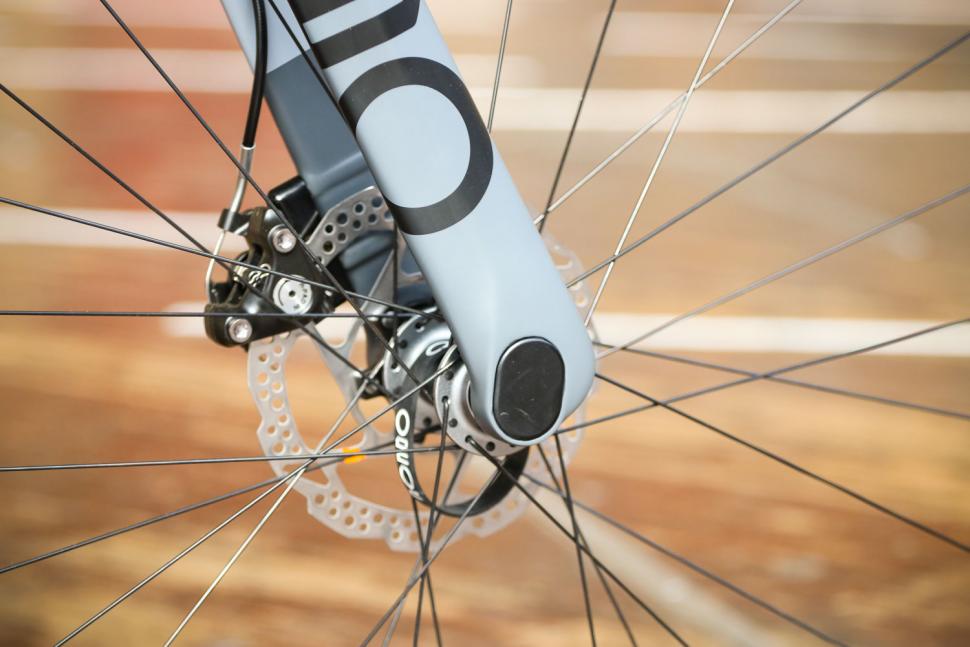
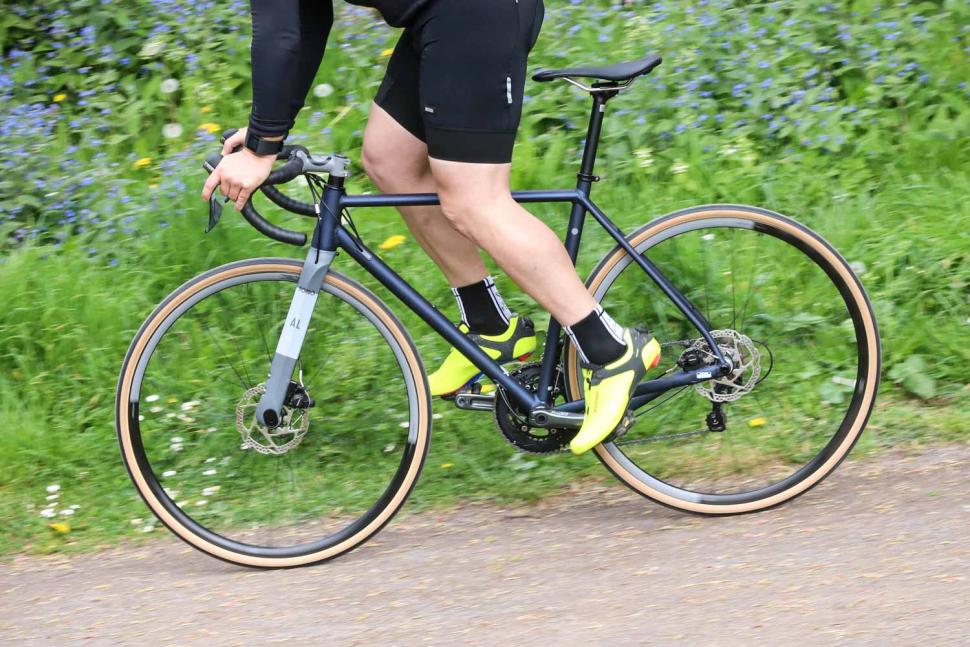
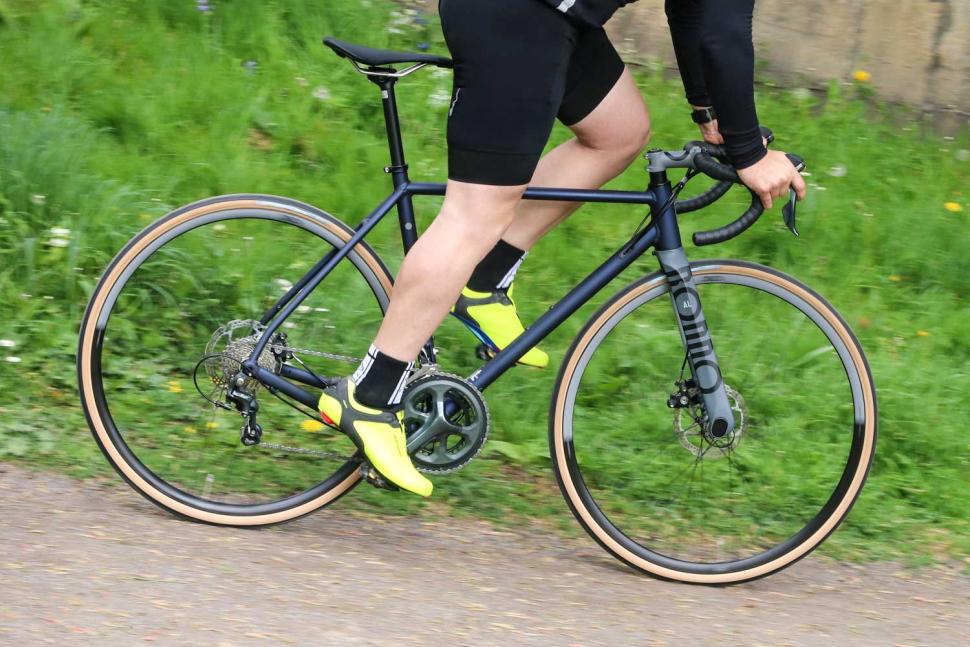
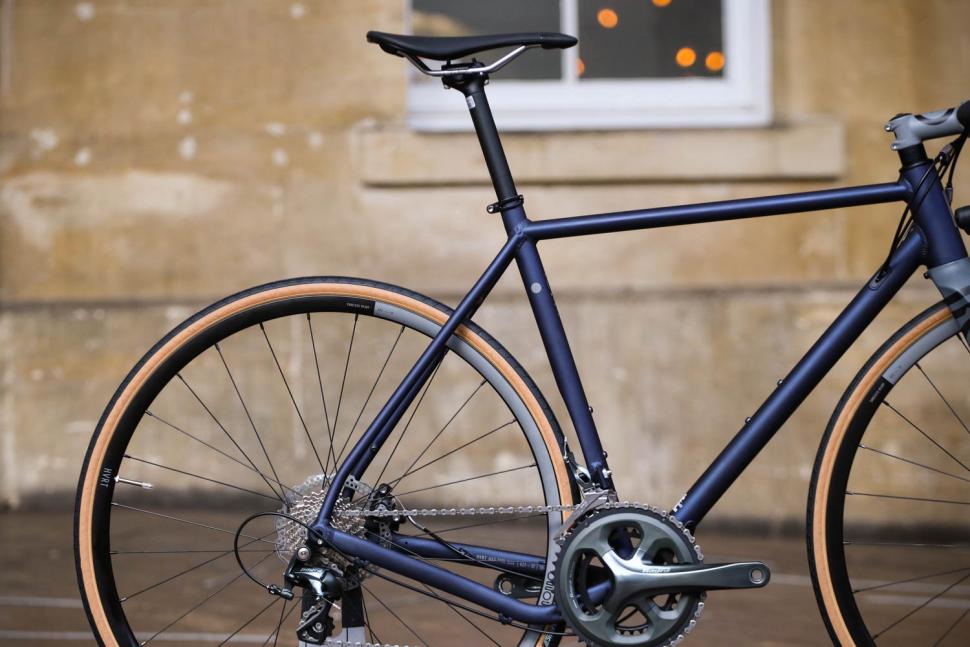



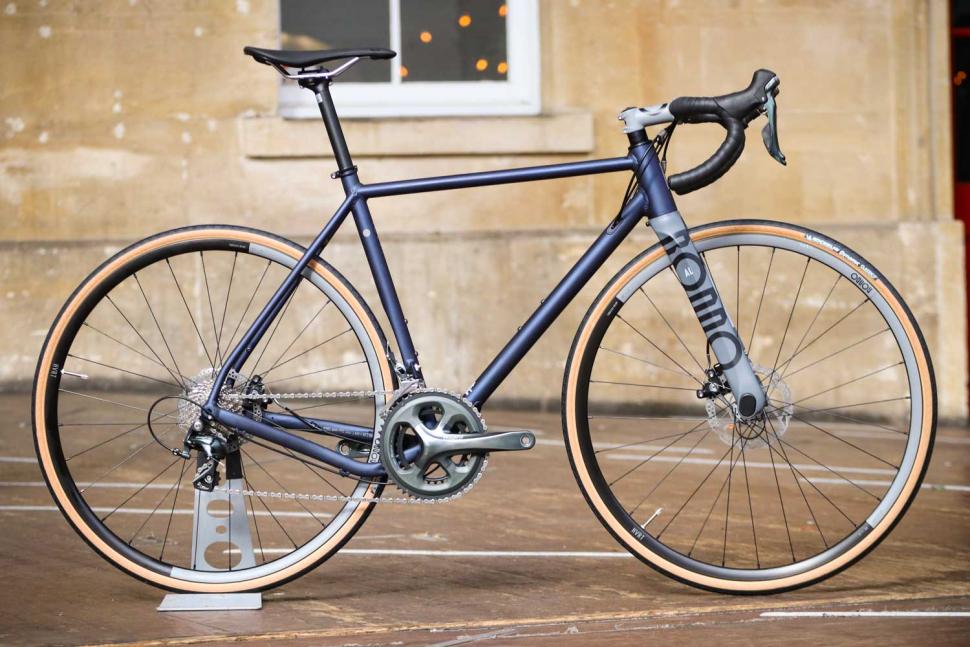

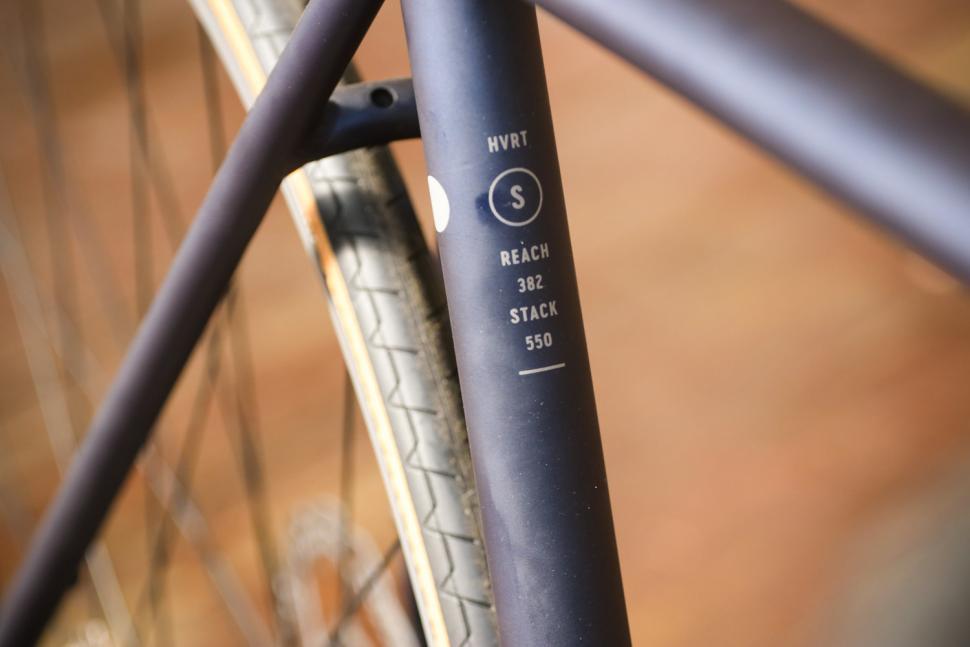
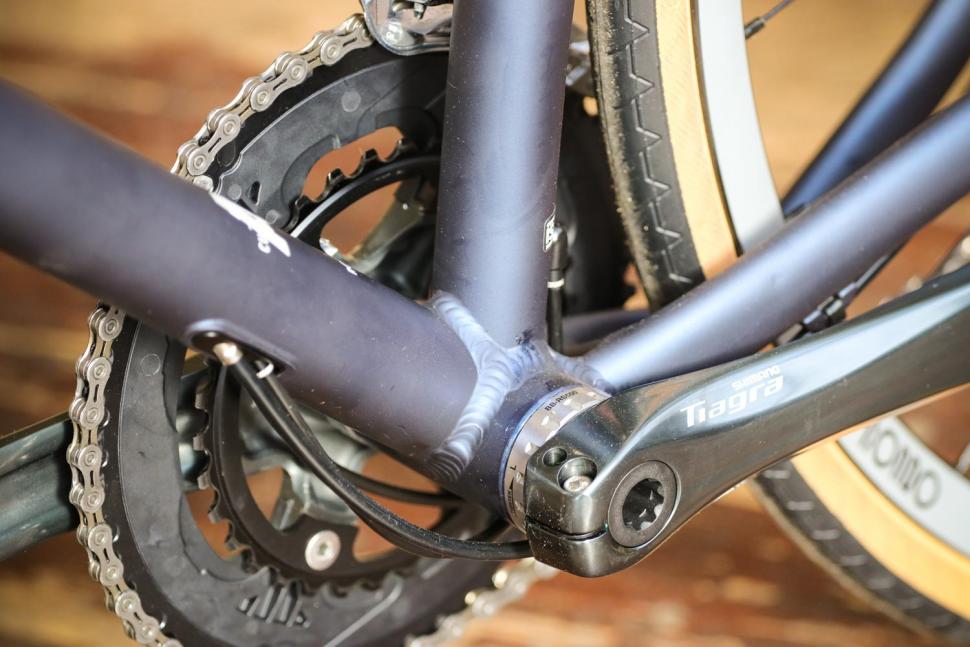
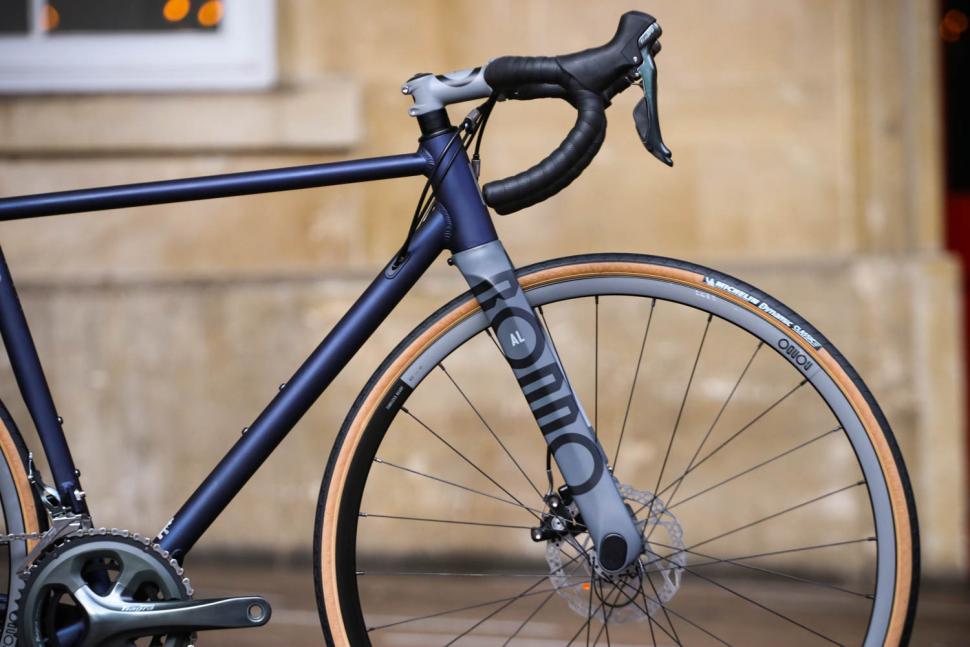

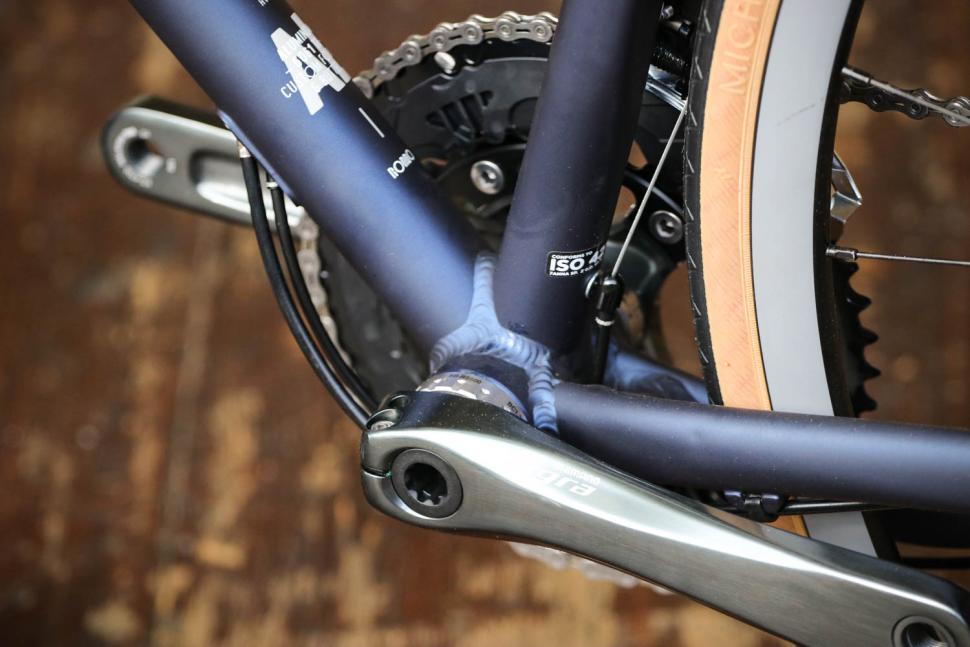


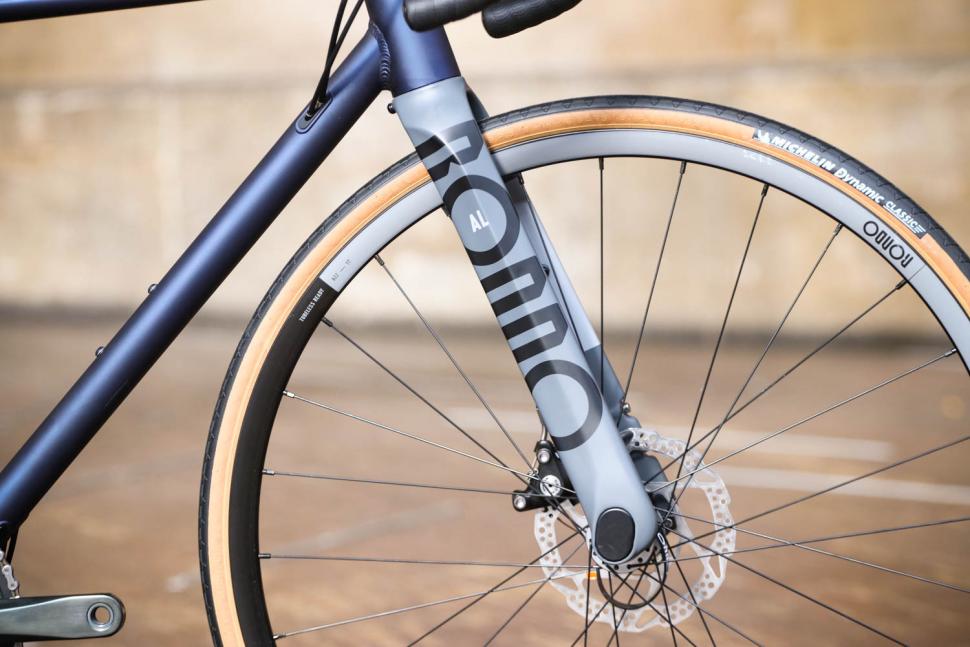
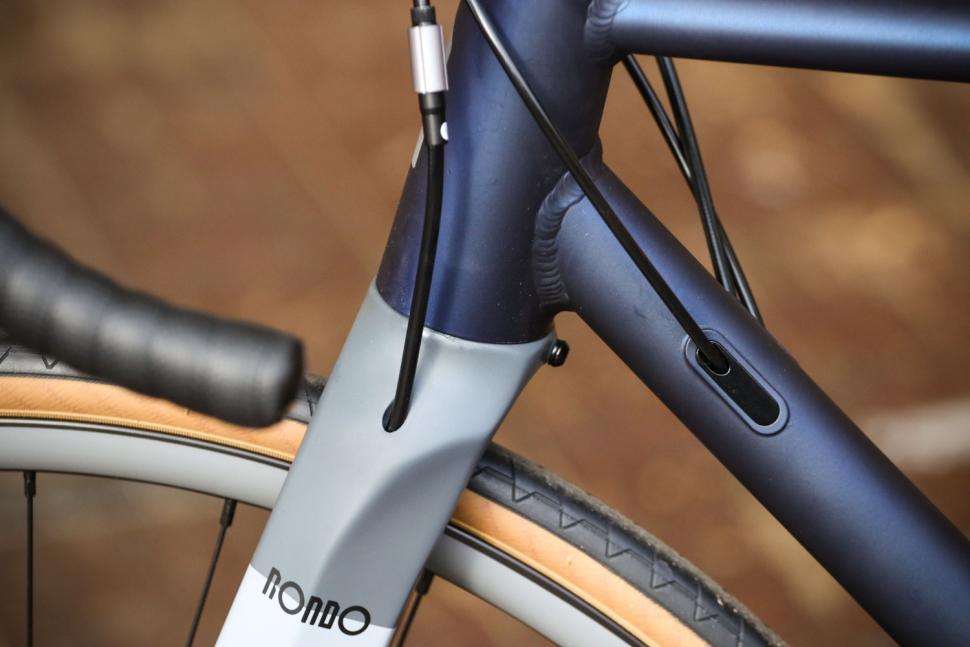
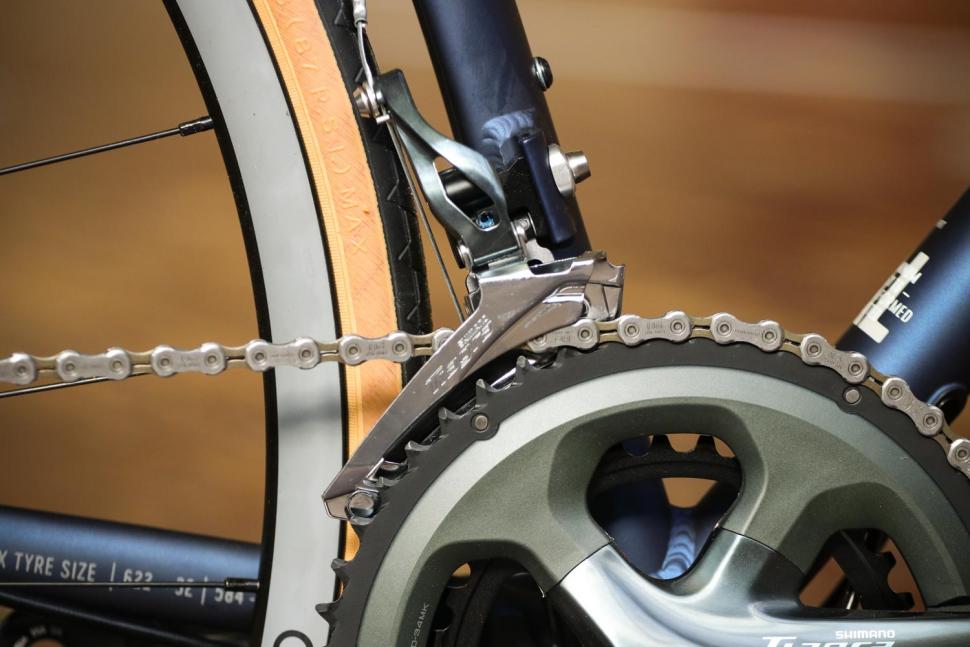
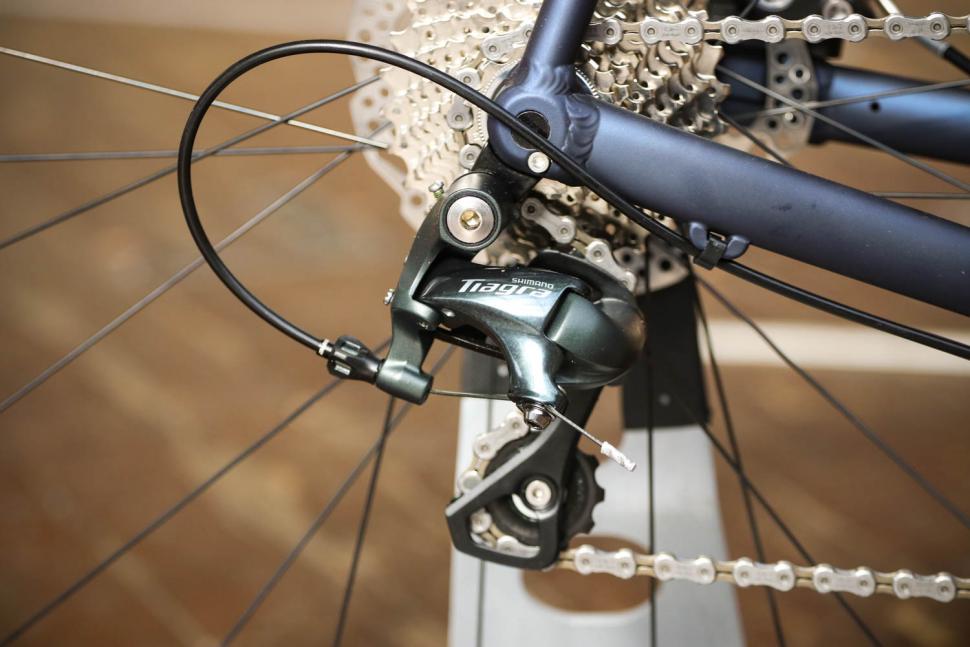
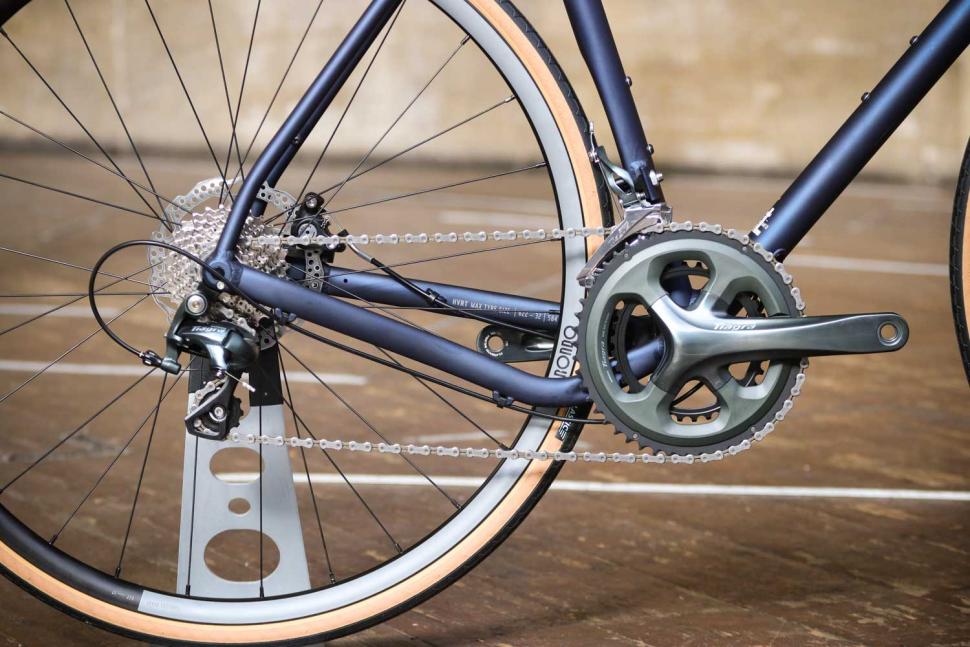
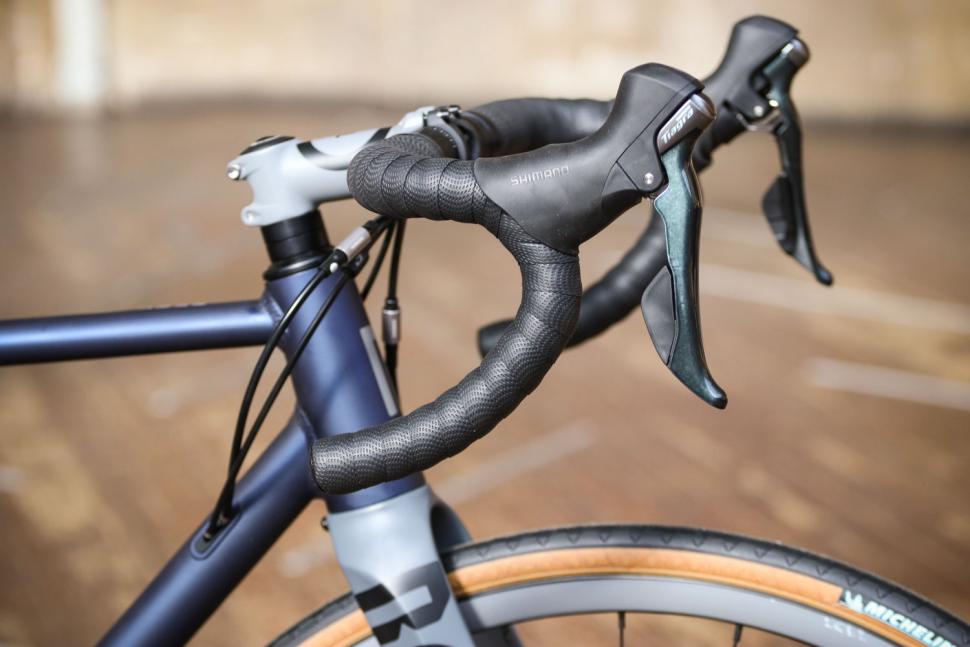







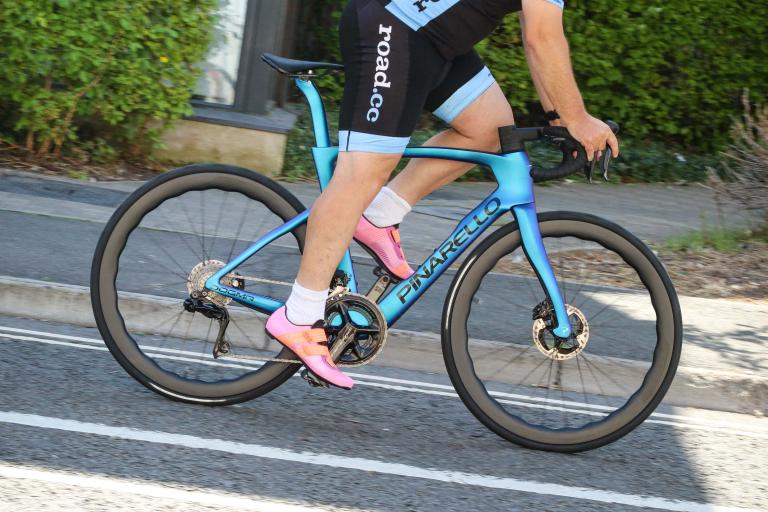
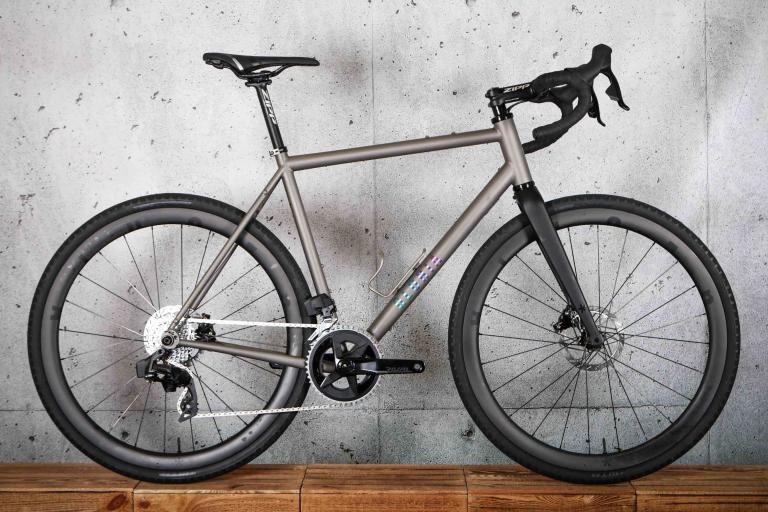
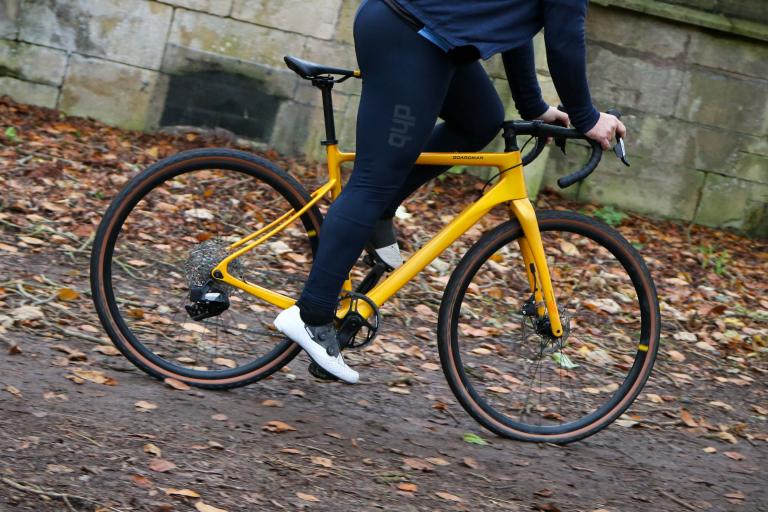

Add new comment
7 comments
Bit weird that the frame is designed to accommodate some pretty chunky tyres, yet the biggest cog on the cassette is 28T and the derailleur is a short cage too.
When Rondo first announced the ‘Twintip Fork’ I really thought that it was a load of marketing twaddle. A gimmick.
I owe them an apology. Never used one myself, but reviewers seem to love it. Not a gimmick, just good old innovation!
Third tier? Dura-Ace, Ultegra, 105, Tiagra...
Oops.
I am liking the branded hub cleaning elastic bands.
Good number of photos in this review too.
Really interested in this bike. The CF version has been well reviewed and that's what I'm looking at.
Has anybody got one?
I've got the CF2 on order. Turning up end of May. High hopes for it given the reviews.